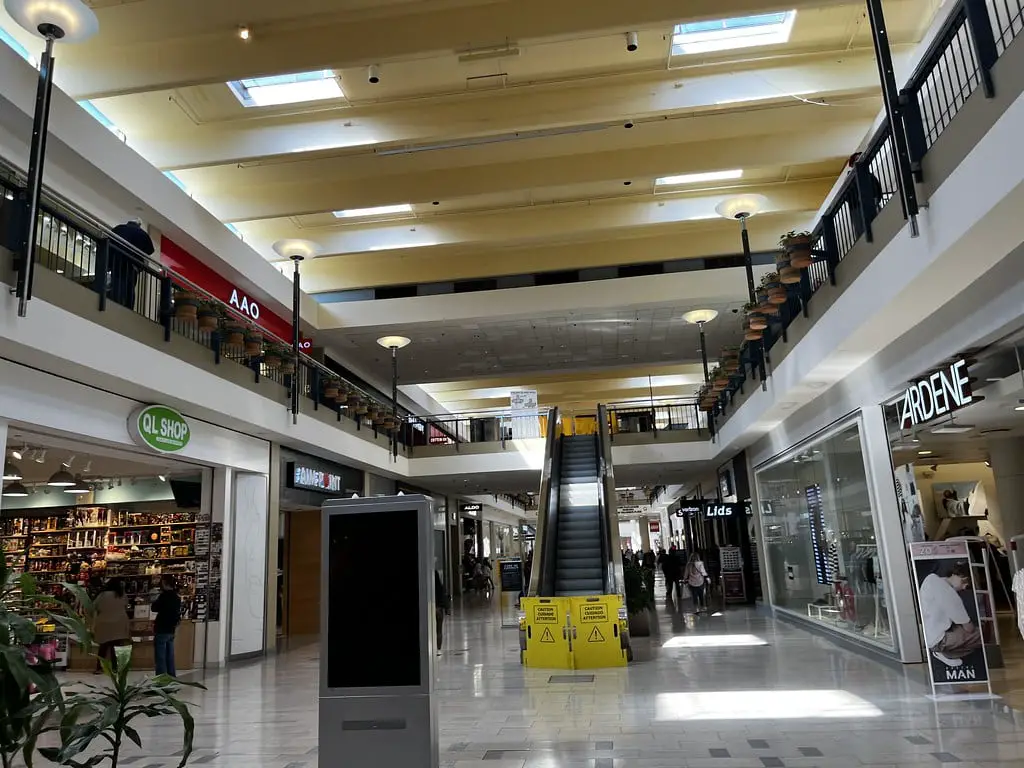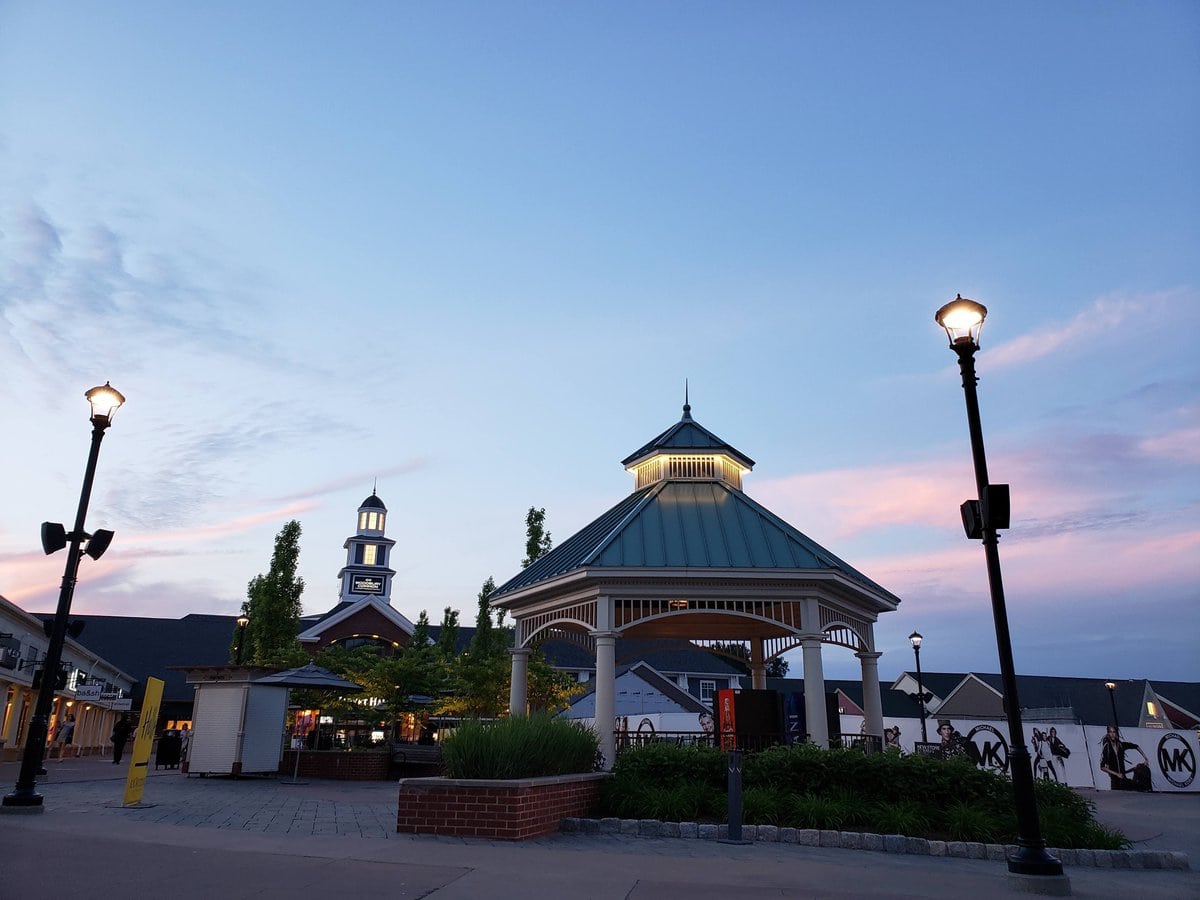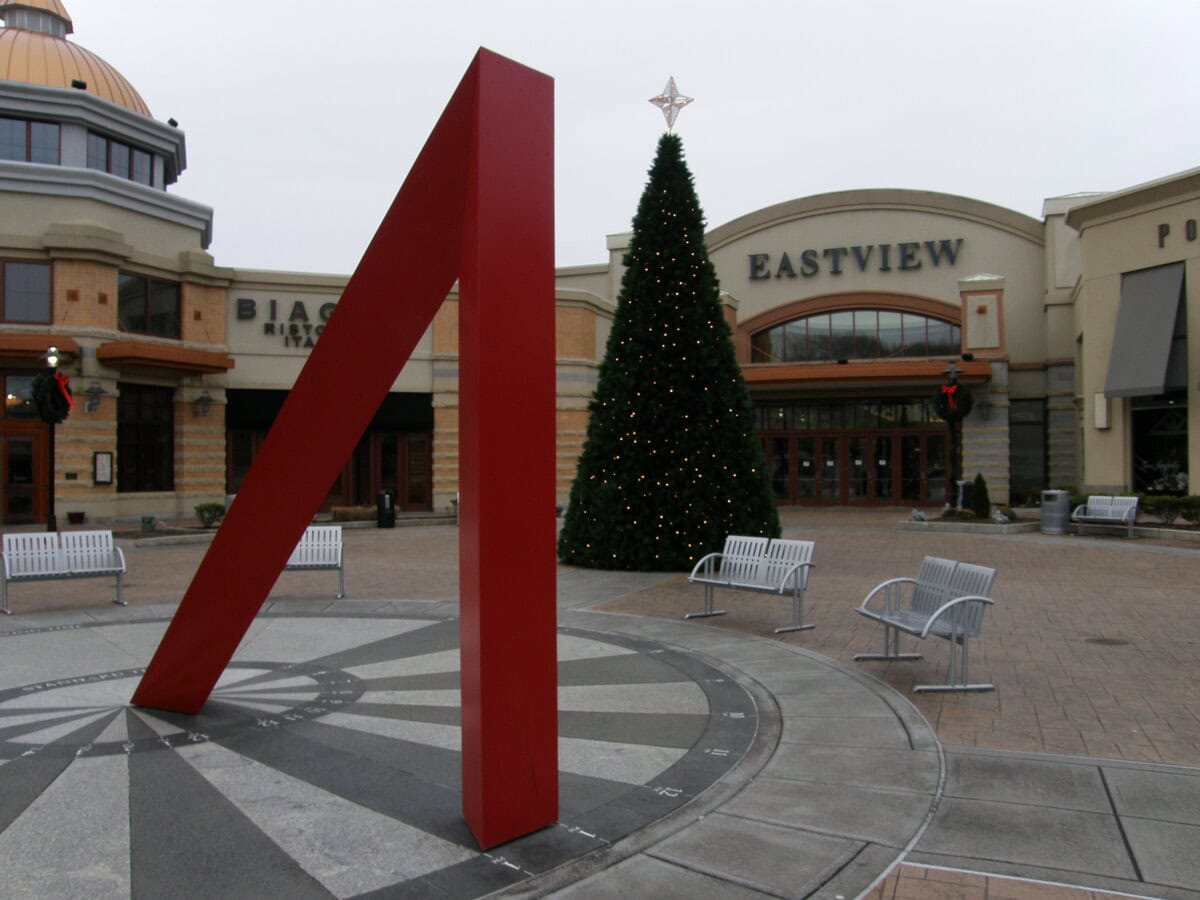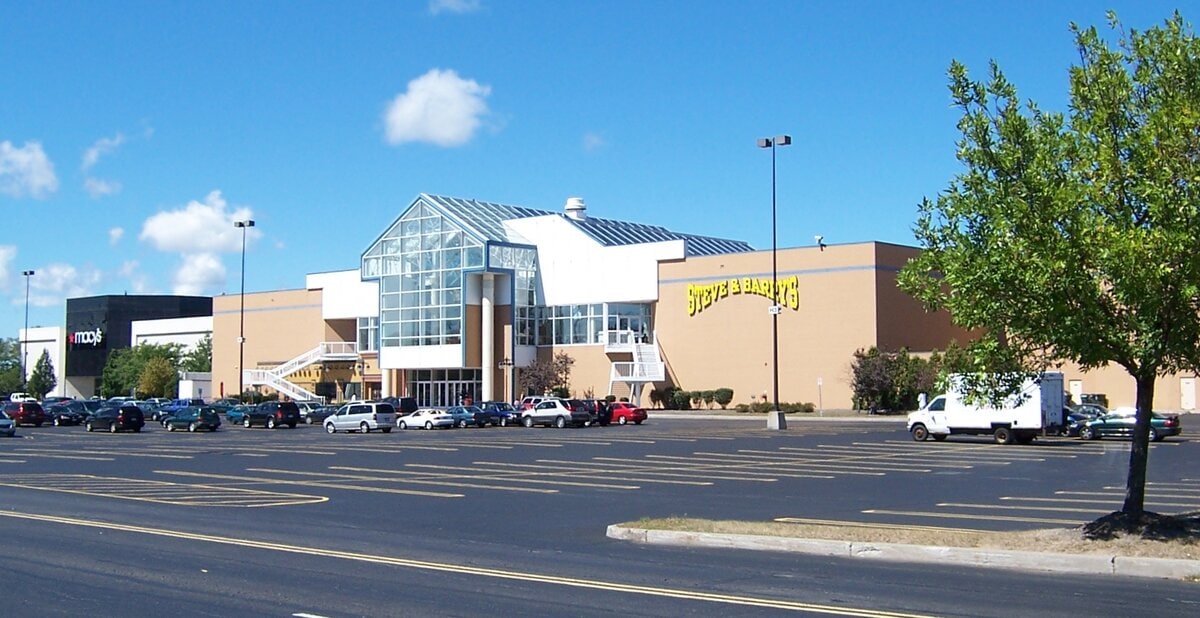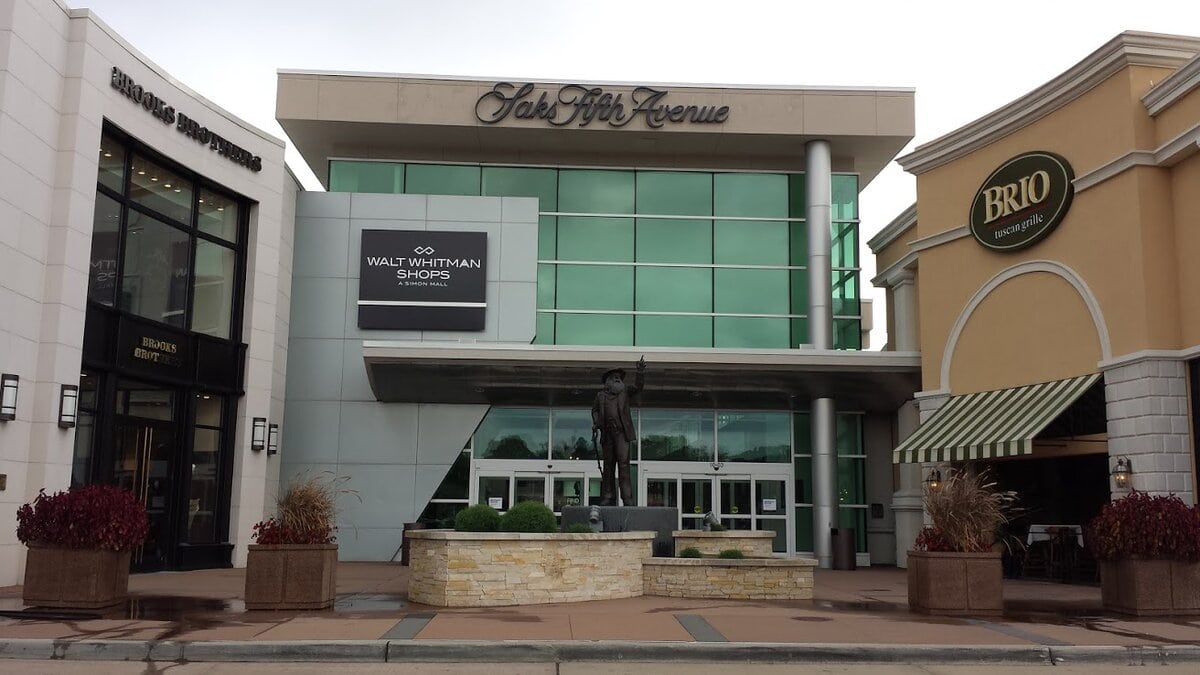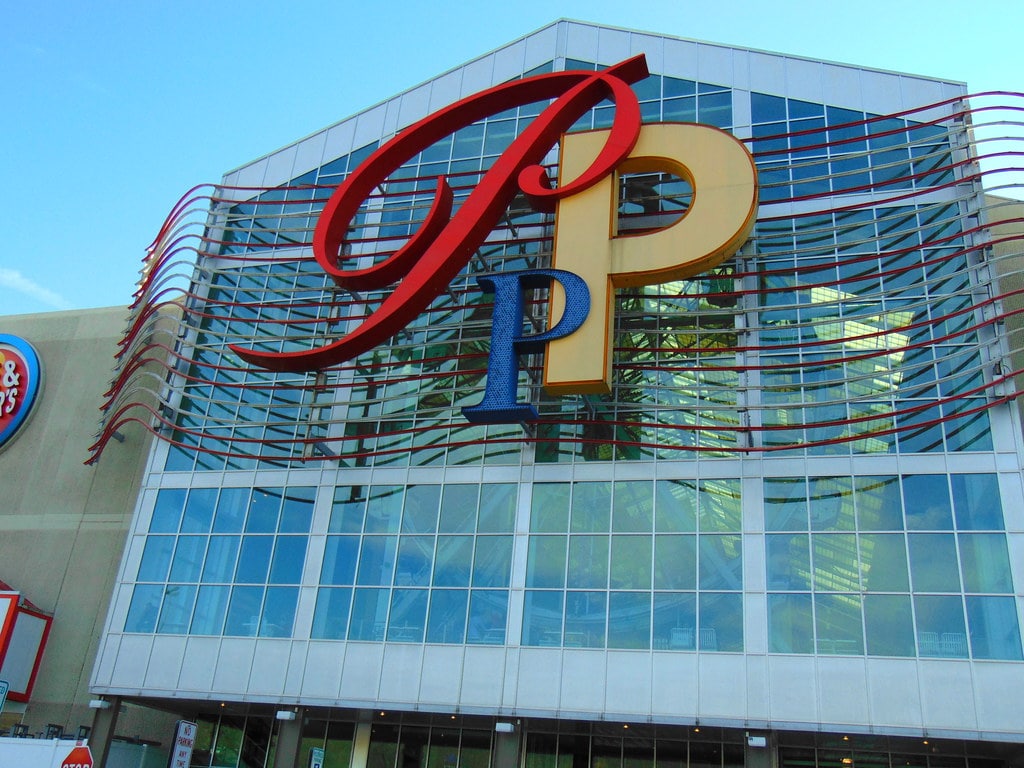Ground Lease and Retail Origins in Staten Island, NY
The Staten Island Mall opened its doors on August 9, 1973.
Its footprint - set in the New Springville section of Staten Island - replaced the long-defunct Staten Island Airport.
That airfield had been there since 1941 and was decommissioned after being sold in 1955. Early site plans had aimed higher than a strip of stores.
In 1964, news surfaced that Macy's and Abraham & Straus (A&S) were considering outlets for the area directly across from E.J. Korvette. Only Macy's moved ahead.
The land, originally marketed under the name Staten Island Center, was eyed for a hybrid retail-amusement project.
But the amusement part never got traction. By 1970, construction was underway on what would become the only indoor mall on the island.
Feist & Feist Realty Corporation took charge of the build.
What resulted from that process was a two-story, T-shaped complex with a large open plaza facing Richmond Avenue.
Macy's and Sears opened as the original anchors. Despite early announcements, A&S never joined the site.
The total floor area hit 1,274,000 square feet, with 622,000 of that allocated to tenants.
The mall's design left room for a wide center court and corridors, with escalators linking the levels.
The concept of indoor shopping in Staten Island was new at that time, and shoppers came for that convenience.
The location also offered easy road access from Richmond Avenue.
For locals or visitors looking for things to do in Staten Island, NY, this shopping hub has played a central role in the borough's retail layout for over five decades.
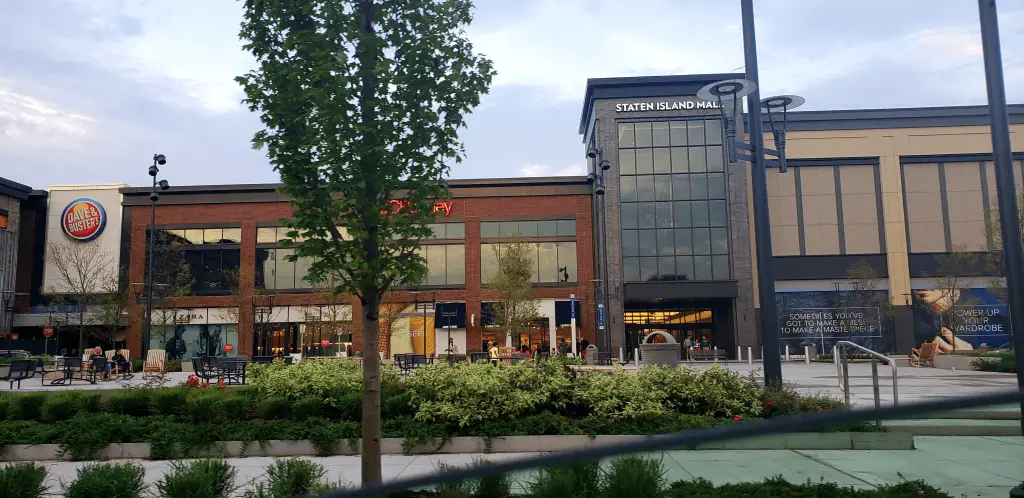
Acquisitions, Remodels, and Square Footage Strategy
By 1980, the Staten Island Mall had changed hands.
The Rouse Company took ownership and immediately started shaping the property to match newer retail trends.
The center court - originally filled with smaller shops dubbed the "Honeycomb" - was stripped down.
In its place, Rouse added escalators beyond the original six and planted more trees indoors.
Fountains were also installed, a style cue borrowed from other suburban malls at the time.
Through the early 1990s, the mall continued to pull traffic, but retail space needed reconfiguring.
In 1993, a dedicated wing for JCPenney was completed.
That move followed the brand's decision to exit its Forest Avenue Shoppers Town location and consolidate operations under one roof in New Springville.
The decision gave JCPenney a larger footprint and improved foot traffic near the mall's southern end.
The mall's layout remained mostly two stories. Macy's operated with a third level, but most tenants stayed on two.
Retailers favored larger floor plans. Smaller stores had either expanded or left, shifting the tenant mix and changing shoppers' circulation patterns.
The outdoor plaza facing Richmond Avenue accommodated seasonal displays, promotional booths, or open gathering areas.
That area helped balance the mall's look.
Tenants rotated, some local chains came and went, but the anchors remained stable through the 1990s.
By then, the mall had established a position on the regional shopping map, between Manhattan's department stores and New Jersey's outlet corridors.
Upscale Tenants and Square Footage Boosts, 2010-2019
Retail strategy at the Staten Island Mall started to shift again in the 2010s.
By 2011, tenants like Michael Kors, Pandora, and Armani Exchange had set up storefronts.
These brands weren't the first to break into the mid-market lane, but their arrival changed the character of the tenant mix.
Adidas and Love Culture joined around the same time, part of a broader wave of updates and relocations that aimed to modernize the space.
Expansion came next. Between 2016 and 2019, a major buildout added roughly 242,000 square feet.
This wasn't a cosmetic update - it was structural. Zara opened. So did Ulta Beauty.
Dave & Buster's took a large corner space in what became known as the Food District.
That section replaced the old food court entirely, consolidating dining and entertainment into a central spot.
Barnes & Noble moved in alongside Lidl, an international supermarket chain that had been expanding across the East Coast.
AMC Theatres opened an 11-screen dine-in cinema, timed for peak weekend and evening traffic.
That helped extend customer dwell time - something mall operators had long targeted but rarely achieved at scale.
Primark, the fast fashion retailer from Ireland, opened its Staten Island location on March 15, 2017.
This was one of the company's earliest U.S. sites.
The Container Store later took over one of the outparcel spots after Sears exited.
This move was part of a national downsizing strategy for Sears, which affected malls around the country.
The Staten Island location followed the same pattern - closing an anchor, splitting the space, and backfilling with newer names (Lids and Primark) better suited to the current retail landscape.
Retail Turnover and New Openings, 2020-2024
In 2022, the mall added a Krispy Kreme near its front entrance, marking the brand's first presence on the island.
That opening generated long lines for several weeks and filled a gap in quick food options near the main drop-off loop.
The addition of a Krispy Kreme outparcel in 2022 also drew attention.
That store was the first of its kind on Staten Island, and it sat right near the mall's main entrance.
In 2023, Brookfield Properties - still managing the site - announced the arrival of several brands.
Newbury Comics opened alongside Miniso, Hobby Lobby, Charlotte Russe, Rainbow, and Sugar Bear.
By April 2024, Uniqlo confirmed it would re-enter the Staten Island market.
Ten years after the brand left the borough, its new store opened inside the mall.
This return was widely shared on social media and picked up by local outlets.
The decision reflected a broader shift by retailers, who were looking to regain lost physical market share after focusing heavily on e-commerce during the prior decade.
In October 2024, Brookfield Properties announced formal plans to expand the mall again.
This time, the pitch focused on developing 41,000 square feet across seven freestanding buildings.
These structures, ranging from 2,000 to 8,000 square feet, would occupy part of the existing parking lot.
A 2022 holiday parking study supported the plan, showing that only 48% of available spaces were used during peak shopping periods.
If approved, the new buildings are expected to open by 2030.
IT'SUGAR, the candy chain known for oversized treats and novelty branding, closed its doors just before the start of 2025.
The Container Store, which had operated on the site since 2017, closed its Staten Island Mall location on February 16, 2025.
Customers cited high prices and light foot traffic in that part of the mall.
By March 2025, more than a dozen storefronts were empty.
Online discussions pointed to rising vacancy rates and compared the mall's current atmosphere with busier years.
The mall remains active, but some longtime shoppers have started to voice doubts about what's next.
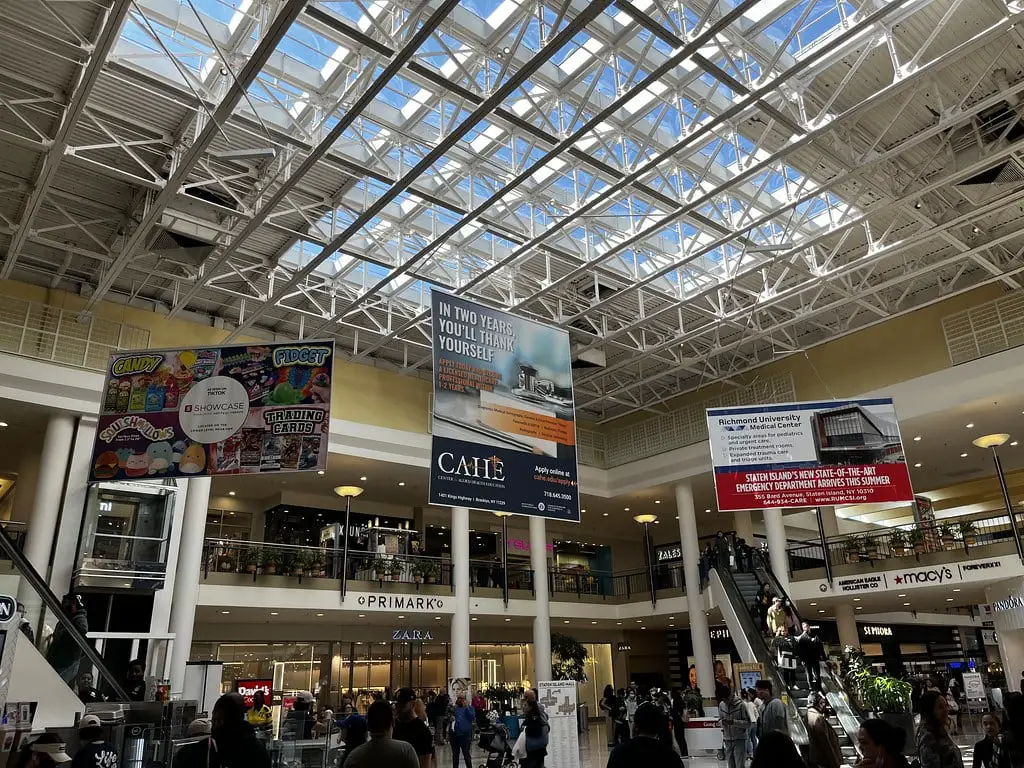
Transit Access and Traffic Flow Patterns
The Staten Island Mall has long functioned as more than a shopping center.
With dozens of bus lines circling its perimeter or entering through designated transit lanes, the mall is a central part of the borough's transportation network.
According to the MTA, it's the third-busiest transit hub on Staten Island, following St. George Terminal and Eltingville Transit Center.
The mall's location at the intersection of Richmond Avenue and Platinum Avenue makes it favorable for commuters.
Retail traffic and bus service interact directly - transfers from shopping to transit happen without crossing major roads or walking extended distances.
An internal ring road handles most of the mall's pickup, drop-off, and ride-share activity.
Retail sites that are easily accessible to public transit often fare better than isolated shopping corridors.
The Staten Island Mall has leaned on that advantage since its early years.
Its connection to multiple bus routes continues to influence leasing and expansion plans.
